I finally returned to Japan after 5 years away. Going back to Japan was a goal for my parents from the moment the pandemic started, as we had a trip booked for March ’20 that we had to cancel. As the years went on without restrictions dropping in Japan and news of family passings and others family members being sick, the urge to get back to see relatives grew to the bursting point. As soon as Japan announced they were opening up travel again, my parents jumped to buy their tickets. I had my own desires to return, but couldn’t commit until earlier this year as ticket prices started surging. I was able to be flexible with my dates and booked myself a few weeks later than my normal mid-March trip with hopes I’d still be able to catch cherry blossom season.
I’d landed in Japan in a bit of a daze, The lines for everything at the airport were crazy and this would carry through as I went into Tokyo. I spent 2 days wading through the hoards of tourists, and was happy to have my 2 week JR pass in hand to start exploring other areas of Japan. When planning these trips with my parents, my goal is to have them take me off the beaten path into areas less accessible to tourists in hopes of finding “real” Japanese experiences. Narrowing down the choices of where to go is always the most difficult thing when planning these trips, but this time, we looked south to Kyushu in hopes of better spring weather.
Fukuoka is Kyushu’s most populous city and the landing point for many Korean, Chinese and Taiwanese visitors. Fukuoka is also known as Hakata, and while there’s a defining difference to the usage, from what I can easily say, they both are used interchangeably when referring to the city, but you need to be specific when it comes to the Fukuoka or Hakata train stations as those are in different parts of town.
We arrived at the Hakata station in the evening, and I was happily surprised that we were not outnumbered by tourists like in Tokyo (yes I know I’m a foreigner too, but I blend in). Like any stops on my trips to Japan, my list of “want to try” always exceeds the amount of time I spend in each place. I narrowed my Fukuoka musts to 3 things, Hakata (tonkotsu) ramen, yatais (food carts) and mentaiko (spicy cod roe). With only 2 nights in Fukuoka, I was going to have to push the itinerary to scratch the surface of the city’s eating/drinking scene and to get my fill of what I was there for.
We broke up the 5 + hour Shinkansen train ride from Tokyo to Fukuoka with a side stop to visit my dad’s family home in Abiko in the Shiga prefecture. We were there to visit my dad’s family home and have lunch. What I didn’t see coming was a huge multi-course unagi feast. I wasn’t hungry for dinner but with limited time in the city I had to start tackling my list so I dragged myself out to have. a bowl of ramen at Hakata Issou.
I researched the heck out of Hakata ramen, knowing I’d only have time for 1-2 bowls on my visit. While I love both Ichiran and Ippudo ramens which originated in Fukuoka, I didn’t want to go to their original stores because I wanted to try places only local to the area. I had several options on my list but the closest and most convenient to my hotel was Hakata Issou.
When we arrived at Hakata Issou, there was a line which I realized was a short compared to what could, be judging from the stanchions lined up all the way down the block. After a 20 minute wait, we got to the front of the line and were invited inside to purchase our order. It took us a while to navigate the vending machine to pay, but we finally figured it out.

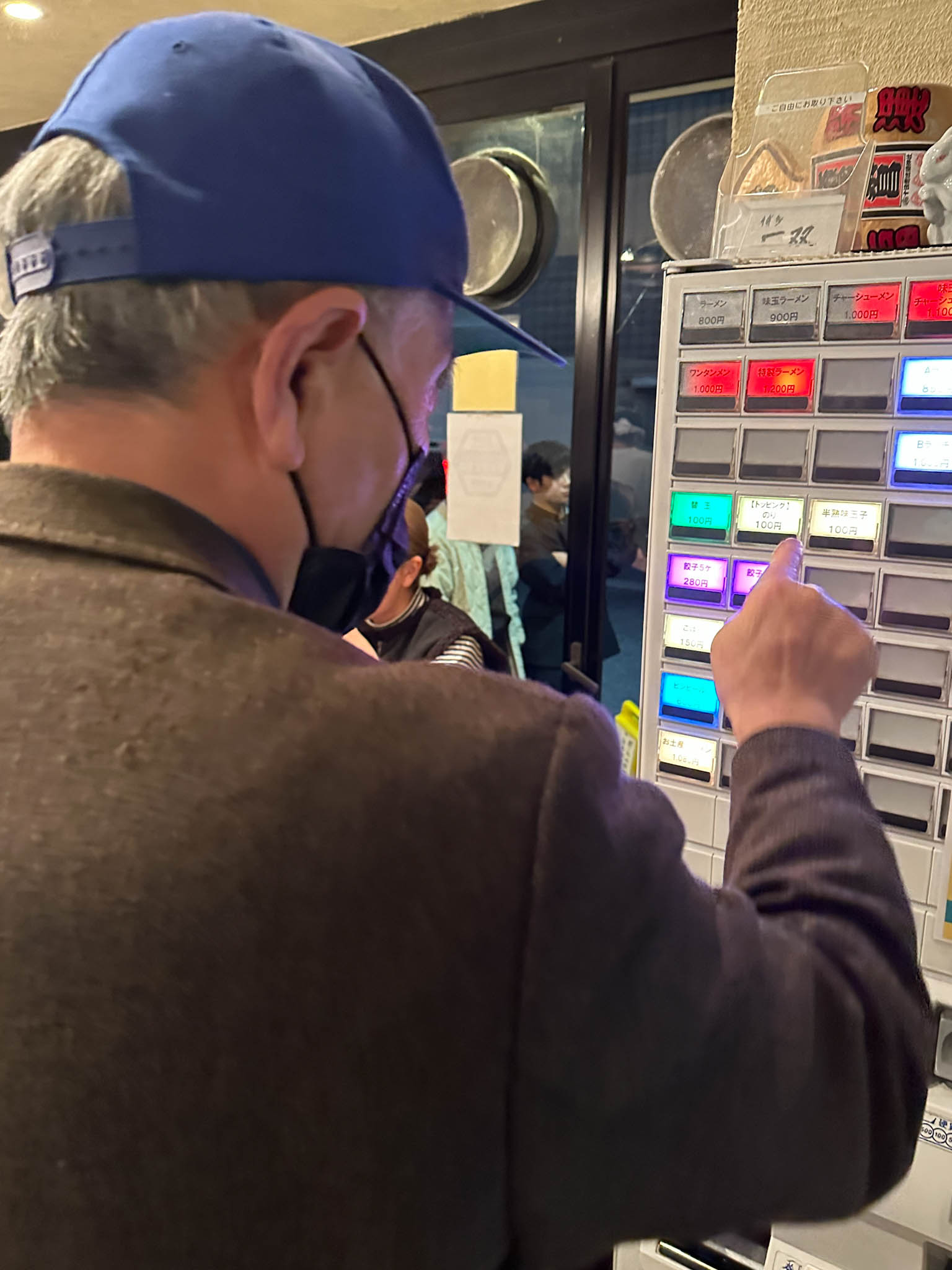
We waiting a few more minutes outside and when it was our turn, we were happy to be sat at the counter for a close-up view.

There’s only 1 ramen option on the menu at Hakata Issou, to which you can add an egg or extra chashu. I knew that I wasn’t going to get through the full bowl of ramen, but I always have to add an egg with my ramen. We also ordered in a plate of gyoza to share just “to taste”.
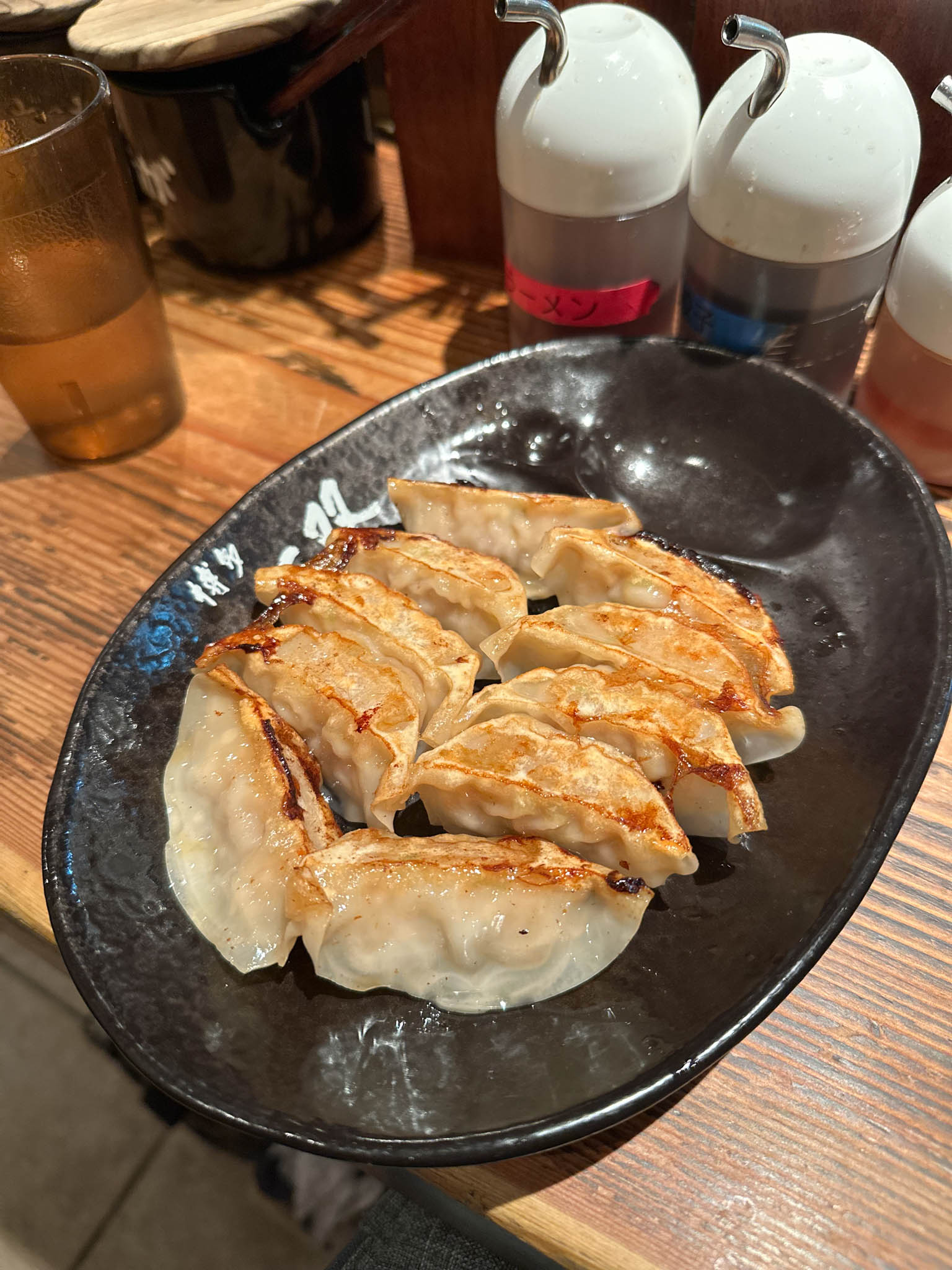

Hakata Issou’s rich foamy pork broth was delicious for the 1/3 of the bowl and then it became over-powering for me. I finished the wonderfully cooked noodles but had to push the rest of the bowl away. Don’t get me wrong, I’m not saying Issou’s rich and complex broth wasn’t delicious, but it’s heavy, and on the verge of funky. I think had I not had the 7 course unagi tasting menu earlier in the day in Abiko, I would have appreciated it more. The gyoza were plump and juicy with a delicate wrapper that held it all together nicely.

The next day, after a disappointing morning adventure to the Yobuko Outdoor Market (a 2 1/2 hour train ride away), I spent the afternoon back in Fukuoka wandering through the shopping areas in the Hakata Station. Our plan was to go to visit the yatai’s along the river for dinner but before that, I wanted to check out Fuglen Fukuoka, a cool coffee shop, a 10 minute walk from the station with a Scandinavian vibe. Who’s kidding whom though, anyone who knows me, knows I don’t drink coffee after 2pm. I went to Fuglen because in addition to coffee, they serve cocktails in the evenings with a Norwegian twist. I ordered the Scandinavian Negroni which replaces Aquavit for the gin. It was the perfect sipper to settle myself into the evening.

I was in Fukuoka 20 years ago, and the only thing I remembered from that brief visit were the yatais (open air food stands) alongside the river. These make-shift food carts are set up each night around the city and each seats 8-10, shoulder to shoulder around an open “kitchen”. We chose the yatais along the river on Nakasu Island which is probably the most touristy of the yatai locations, but it’s also the one with the nicest view. You can research in advance which of the carts might be serving better food than others, but we just took a chance and lined up at one that was busy but without a crazy line up. Typical things served at yatais include yakitori, ramen, gyoza although now you can find yatais that serve french food or coffee & cocktails.


It was a cool spring evening, so as we were sat the bubbling pot of oden caught my eye. After ordering a cup of Nihon-shu (sake), we just started pointing at the things we wanted (all of it) and our items were quickly placed in front of us. Oden is my comfort food, but rarely eat it at home so I try to eat it when I see it in Japan. We also ordered some vegetables and yakisoba but the highlights were the omelette filled with mentaiko and bowl of ramen which was lighter and easier to eat than the one from the previous evening at Hakata Issou.

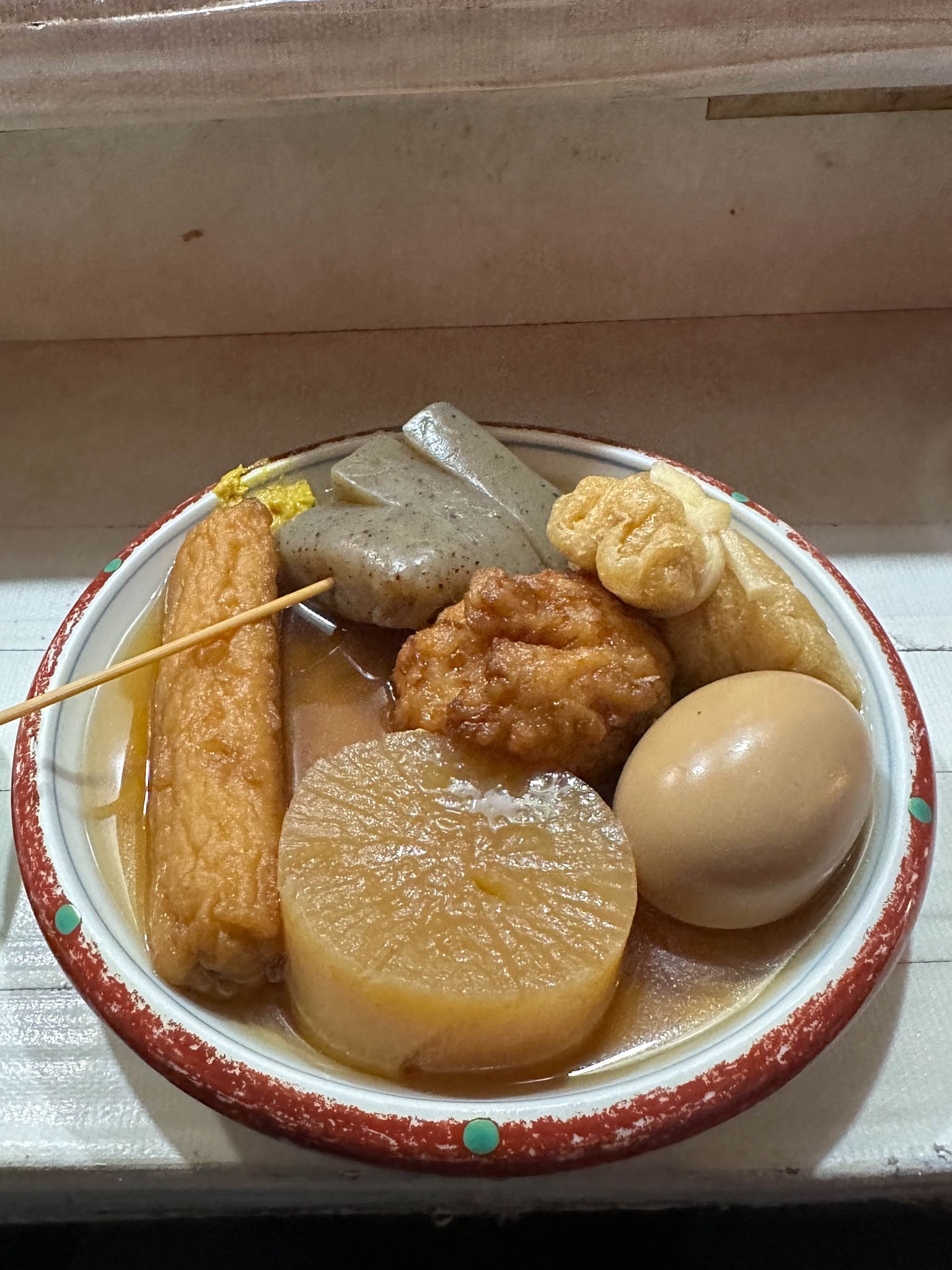

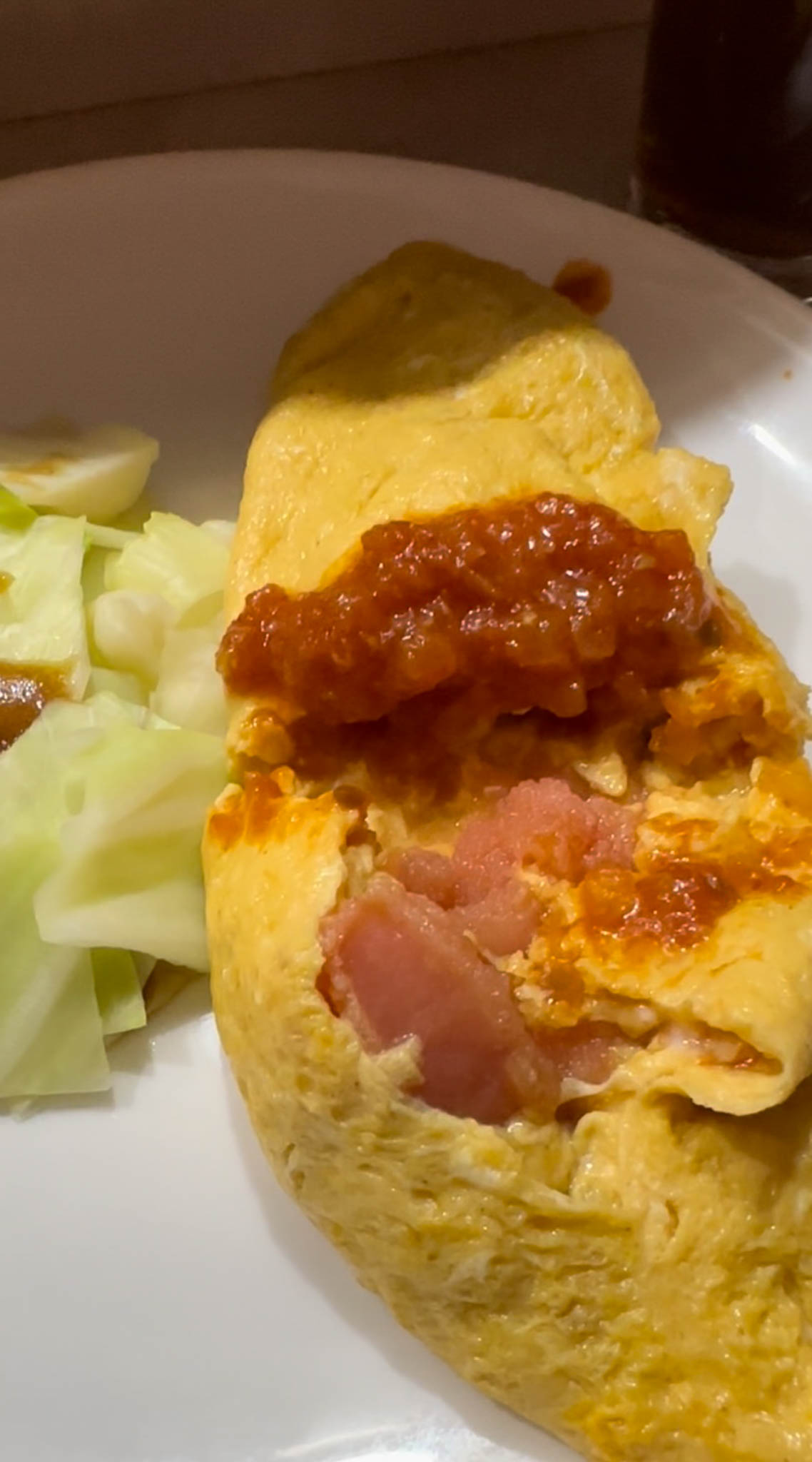

After dinner, I had energy to spare so I stopped in at Bar Cherokee for a nightcap and (hopefully) conversation.

I spoke to the bartender about choosing a cocktail for me with seasonal (local) ingredients and something refreshing but not too sweet. I was surprised when a slushy strawberry cocktail was placed in front of me as I equate strawberry drinks as sweet. But my cocktail was well-balanced, very fruity and very refreshing. What was (delicately) sweet though, was the sakura wagashi placed before me as “service”. I love that Japanese bars serve you a little bite of something when you order a drink. The variety of what you’re served is always a surprise and delight.
On the morning of our departure, I felt like going for a run, so I took a taxi out to Momochihama Park to run along the beach and catch some glimpses of the Fukuoka Tower.
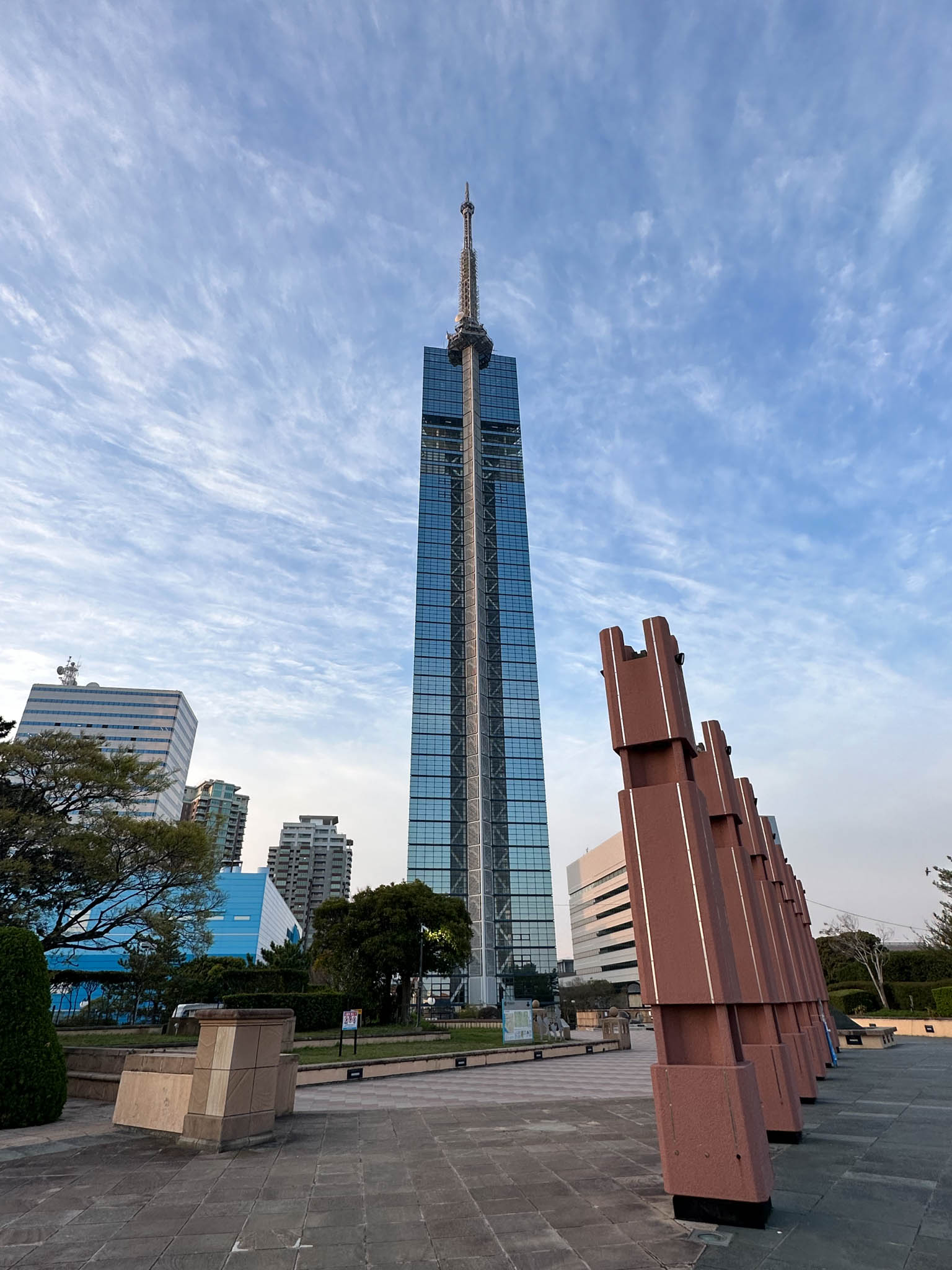

I couldn’t leave Fukuoka without one more taste of mentaiko. So before boarding our train east, we head to the basement of the station to Tanya Hakata, a restaurant that specializes in beef tongue. Breakfast can be such a bargain in Japan, especially if you’re ok eating savoury foods with rice. At Tanya, their breakfast special is a plate of beef tongue with sauteed vegetables, soup and rice is ¥500 (around $5) and for a few dollars more you can add mentaiko +egg or tororo (sticky mountain yam). Not being a breakfast person, I was only hungry for mentaiko and tororo and was able to just order the sides. If breakfasts at home tasted like they did in Japan, I might consider eating a morning meal.

2 nights in Fukuoka went by in a flash and I could have spent longer exploring the city that contains many taste treasures. It will stay on my list worthy of a return visit one day soon.

